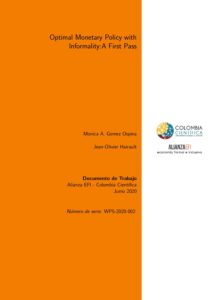Our paper aims to unveil how much the monetary policy shall deviate from the flexible-price allocation in an economy with a large informal sector. First of all, the presence of variable taxes in the formal sector generates an inflation bias under discretionary policy which increases with the size of the informal sector. Secondly, we find that only the formal sector due to tax distortion fluctuations is responsible for cost push shocks which are amplified in a more informal economy. The trade-off between inflation and the formal output gap is then dependent on the elasticity of the former variable with respect to the latter one, which is lower in a more informal economy. However, the optimal management of inflation also depends on the elasticity of the informal output gap with respect to the formal output gap. As this elasticity is decreasing with the size of the informal sector, whether inflation volatility (in terms of the aggregate output gap) is lower or higher in a more informal economy is ambiguous. By simulation, we show that economies with a larger informal sector should stabilize more inflation relative to the two sectoral output gaps.
Autores:
- Jean-Olivier Hairault
- Monica A. Gomez Ospina
Palabras clave:
- Informality
- New-Keynesian macroeconomics
- Optimal monetary policy
- Tax distortion
Categorías:
- Proyecto 5
- Documentos de trabajo
